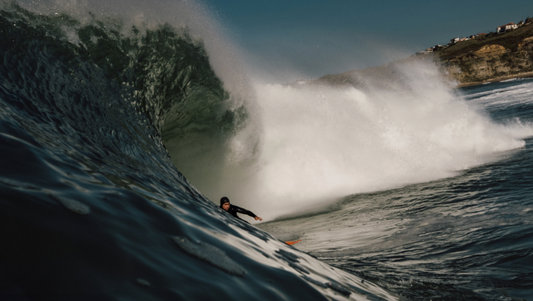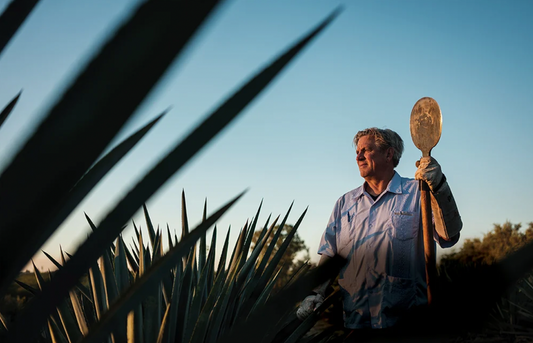A world-renowned shaper and big-wave surfer, Oceanside’s Gary Linden was a former president of the Association of Surfing Professionals (ASP) before he founded the Big Wave World Tour in 2009, which eventually became the WSL Big Wave Tour. But beyond a pro surfing innovator, competitive judge and event organizer, Gary’s hand-shapes designs are rooted in the idea of sustainability, using balsa and agave woods to create stunning boards that are performance-oriented, durable, and hydrodynamically intricate. An early adopter of agave foam, Gary is committed to further demonstrating that it’s possible to use natural materials and a nontoxic process to create high-performance boards that are better for the shaper, the rider, and the environment. “I just fell in love with it,” says Gary. “It’s dusty, it’s dirty, and it’s knotty. So, it takes a special kind of shaper to wanna work with it.” Mr. Linden gave us some more thoughts on working with agave in a conversation below.
Agave Brothers: Clearly, you shaped with agave a whole lot; you’re one of the very first to do it. What do you love most about the material?
Gary Linden: Well, for starters, I sure love how they look when they’re finished. [laughs.] The colors are just beautiful, you know? So, it’s truly a way to make an art piece out of the craft I’ve been working with as a professional all my life. I also love shaping with it. I love the texture of agave — it’s like in between foam and balsa wood, not too soft and not too hard. So, I’m able to get a clean, perfect version of what I’m trying to shape. The material’s really good to work with. Then, actually surfing them, I just really love the way they perform. They flex a little less than foam but more than balsa wood, which doesn’t flex, so it’s really a perfect medium.
Amazing. Would you say there’s a certain type of wave they excel on, or does agave work in anything?
As the boards get bigger, they start to flex more to dissipate energy. So, longboards and big-wave boards become comparable to foam boards. But as long as you can get agave shortboards light, you get great performance there. It can be a little challenging to get a five-pound shortboard out of agave, but if you can, it’s a better board. I’ve always loved balsa wood for big-wave guns, though, because they don’t flex as much. But agave flexes a little more than balsa wood, so they’re actually more responsive. I did a project with Cuervo, the tequila company, where I made a board for Alex Gray. He took it down to Todos Santos and rode some good-sized waves down there. It worked really good.
How do you get them lighter?
If the agave core is light, then you can glass it strong enough to hold up. If the core is heavy, you can put less glass on it, but that board won’t last too long, glassed too lightly [laughs].
Do you see agave disrupting the industry?
That’s more of a marketing question, but it seems like in Europe, they’re doing a good job distributing them. Agave is difficult to manufacture. I don’t think that agave will ever totally replace foam, but I do believe that there’s a market for an alternative, environmentally cleaner product. The quantities that are available at the moment are minimal, but my vision with agave has always been: These agave stalks that were just going to get thrown away could be put to good use. We’re putting people to work, we’re surfing on it, but we’ve still got a ways to go to changing the industry.
But, if some other people could take a look at them and say to themselves, “Hey, maybe there’s something else we can make surfboards out of, or maybe we don’t have to use foam,” then that’s a step in the right direction.
Well said. So, what exactly makes them environmentally cleaner?
Well, I’ve seen all the waste firsthand that happens from working with foam boards. You don’t even need metrics to compare the difference: One’s a natural product you can grow, and the other is made out of petroleum…duh [laughs].




